|

|
|
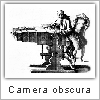 The
camera obscura, the forerunner of the photographic camera, was
developed during the period from 11th to the 16th century. Its
purpose was to show on paper an image that could be traced by hand
to give accurate drawings of natural scenes. The
camera obscura, the forerunner of the photographic camera, was
developed during the period from 11th to the 16th century. Its
purpose was to show on paper an image that could be traced by hand
to give accurate drawings of natural scenes. |
|

|
|
1558
Giovanni Battista della Porta illustrated
camera principles in his book "Natural Magic". |
|

|
|
1568
Daniello Barbaro fitted the
camera obscura with a lens and a changeable opening to sharpen the
image. |
|

|
|
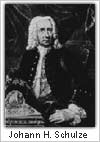 1725 1725
Johann Heinrich Schulze
discovered that the change in color of a mixture of silver nitrate
and chalk, in sunlight, was caused by light, not heat. |
|

|
|
 1802 1802
Thomas Wedgwood and Sir Humphry
Davy recorded by contact printing, on paper coated with silver
nitrate or silver chloride, silhouettes and images of paintings made
upon glass. However, they could not make these prints permanent. |
|

|
|
 1816 1816
Joseph N. Niepce made a crude
photographic camera from a jewel box and a simple lens. With it he
made a negative image. |
|

|
|
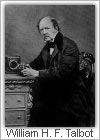 1835 1835
William Henry Fox Talbot
(Philosopher, Egyptologist, classicist, mathematician, philologist,
transcriber and translator of Syrian and Chaldean cuneiform texts,
physicist, and photographer) discovered a method of rendering the
camera obscura image permanent. The image was fixed on silver
chloride paper by means of sodium chloride. Talbot was the first to
make positives from negatives, the first to make enlargements by
photography, and the first to publish a book illustrated with
photographs (book published 1844). |
|

|
 |
1837
Lois J.M. Daguerre invented
daguerreotype process. The image was recorded on a silver
plate made light sensitive with iodine. The plate was then
developed in mercury vapor. |
 |
|
|

|
|
 1839 1839
Sir John Herschel used sodium
thiosulfate, or hypo, to make pictures permanent. |
|

|
|
1841
William Talbot patented the
calotype process. Sometimes this process was called the talbotype
process. The modern photographic process is based on Talbot's
negative to positive principle. |
|

|
|
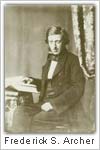 1851 1851
Frederick Scott Archer invented
the wet collodion process for making negatives. The wt-collodion
process was used by many well known photographers such us: Roger
Fenton, Mathew Brady and Alexander Gardner. |
|

|
|
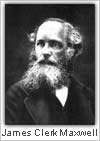 1861 1861
James Clerk Maxwell reproduced a
colored ribbon by the three color additive process. |
|

|
|
1869
Louis Ducos du Hauron and Charles
Cros independently, published pieces on the various methods used in
three color photography. |
|

|
|
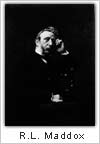 1871 1871
Richard L. Maddox prepared the
first gelatino bromide emulsion. |
|

|
|
 1872 1872
Eadweard Muybridge first made
serial photographs of moving animals and people Later, he projected
them, showing motion.
|
 |
|
1873
Herman W. Vogel discovered that
by adding certain dyes to the emulsion plates could be made
sensitive to all colors. Early photographic material were sensitive
only to blue light.
|
 |
|
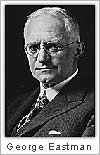 1880 1880
George Eastman began his dry
plate business in Rochester (New York). The Kodak system was started
in 1888 by the Eastman Dry Plate and Film Company, and a box camera
was placed on the market. The camera was sold already loaded with
enough film for 100 exposures. After exposure, both camera and film
were returned to Rochester, where the film was removed and processed
and the camera then reloaded and returned to the customer.
|
|

|
|
1889
Thomas Edison made the first
motion pictures on 35 millimeter film with the transparent, flexible
roll film made by the Eastman Company.
|
|

|
|
1924
The Leica 35 millimeter camera
was marketed in Germany, initiating widespread interest in candid,
or unposed, photography.
|
|

|
|
1931
The electronic flash was invented
and patented in the US.
|
|

|
|
1947
Edwin H. Land introduced the
Polaroid Land camera. Camera was able to develop and print B&W
photographs in 60 seconds.
|